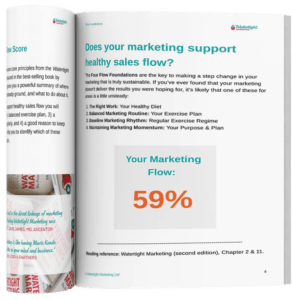“If you don’t say what you want, you won’t want what you get”.
There’s a skill to writing a marketing brief. If you get it right your supplier will deliver first time – no surprises. If you get it wrong (or worse still don’t provide one at all), it costs time and money to put it right.
Writing an effective brief has been an essential part of my role as an account handler for over 20 years. My best advice is to take extra care to make them engaging, relevant and factual, because a boring brief makes for an unmotivated supplier. And, ultimately a disappointing end result.
Even when a customer provides us with a good brief, I will talk it through with them and make sure we all agree with the requirements. And if we disagree with an objective or output, a decent marketing consultant won’t mind adding their penneth and making specific recommendations to help get it spot-on.
TOP TIPS: When preparing a brief avoid jargon, lingo and acronyms. Include facts (no assumptions or embellishments). Use plain speaking English and include as much detail as possible. It’s easier and quicker for your supplier to cut out the superfluous rather than have to fill in some gaps.
Whether you need a creative brief, web brief, copy brief or even an event brief – here’s a useful checklist to help make sure nothing gets missed:
1. YOUR PRODUCT/BACKGROUND: Include a brief summary about your company, its products and its services. Set the scene a little and try and include something about your brand, its personality and philosophy. Pricing and sales processes should also be mentioned. Will there need to be any initial research, or do you already have some research that findings that will help?
2. COMPETITION: Talk about competitor products and services. What marketing activity are they doing and are they doing it better? Include examples and/or weblinks.
3. WHAT: What is your required output? I.E. what type of activity are you looking for (an ad, a DM campaign a new website, a conference)? Think about how the deliverable will be used – in print, on a website, in a salesperson’s briefcase, etc.
4. WHY: Why are you doing this activity? What objectives are you trying to achieve (raise awareness, collect data, increase sales, get someone to do something…)?
5. WHO: Describe your target audience – who you want to talk to. Are they businesses or consumers? Describe why you think they need your product or service, and why you think they might not be buying (barriers). Try and describe the role of this person in their organisation, or what type of consumer they are. What do they read? What do they listen to?
6. WHEN: Is there as seasonal reason for undertaking this piece of activity? Are there any key milestones or deadlines that need to be met?
7. HOW: How are you going to measure the effectiveness of this activity? What will success look like? Can it be piloted or tested first?
8. LIKES & DISLIKES: It’s always useful to list some activities or brands that you have already seen and liked. Even if it’s just a website (competitor or otherwise).
9. MANDATORIES: It’s essential to provide a ‘call to action’ plus any brand/tone of voice guidelines, or list any assets that must be used or avoided. Make sure to include any Ts & Cs and legal requirements too.
10. BUDGET: It’s much easier for a supplier to respond to a brief if they know how much you would like to spend. Ballpark is fine, but unless you give an idea you may find you’re presented with an idea that’s totally unreachable.
There are some simple equations you can use to work out how much you should invest, but saying there is ‘no budget’ either means you expect it for free, or the sky’s the limit! Wouldn’t that be great?
© Watertight Marketing Ltd | Cartoon by Cartoono

Cheryl Crichton
Watertight Marketing Master Practitioner
Cheryl is an award-winning marketing coach and advisor and one of our Master Practitioners. She loves a bit of strategy, but is never happier than when she’s elbow deep in delivering a serious bit of clever marketing. Covering digital, social media, direct marketing, events, website build, brand, advertising.



Thank you. Very helpful article.
thankyou
Thanks for sharing your thoughts on marketing.
Regards
Perfectly clear. Thanks.
This has been so helpful for me thanks for sharing 🙂
Great article. It has been very helpful to write my brief.
Thank you
Very useful prompts. Thanks!
Thank you.Very helpful article.
I found this very useful. It covered the essentials to focus on what to consider when carrying out marketing activities, in a clear and straight forward way.
Thank you so much , this has helped me.
Hi there, I want to subscribe for this website to obtain newest updates, so where can i
do it please help out.
Hi Shelby, and thanks for your comment on the Watertight download. I hope you found it useful.
If you have a copy of the book and register it online it unlocks loads of free updates, videos and workbooks if you are interested (and gives you access to Facebook and LinkedIn groups for live discussion and ideas exchanges with Bryony Thomas, consultants like me and other book owners like you would be).
Read more about the book here (and apologies if someone from Watertight has already got back to you):
https://watertight-thinking.com/about-the-book/
All the best
Cheryl
is there any chance to see some (or just one) examples?
Excellent blog you have here.. It’s difficult to find high-quality writing
liкe ʏ᧐urs nowadays. I really appreсiate individxuals ⅼike you!
Take care!!
Thanks. This article was very informative. My boss asked me to write a marketing Brief and I had no idea what to include in it. But I feel you should have added a template too.
Thanks again.